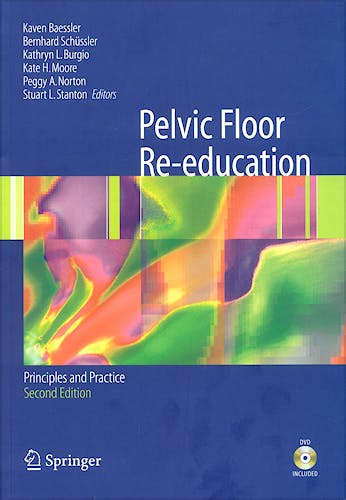

No hay productos en el carrito



Pelvic Floor Re-Education
Schussler, B.
2ª Edición Septiembre 2008
Inglés
Tapa blanda
302 pags
1200 gr
18 x 26 x 2 cm
ISBN 9781852339685
Editorial SPRINGER
LIBRO IMPRESO
-5%
124,79 €118,55 €IVA incluido
119,99 €113,99 €IVA no incluido
Recíbelo en un plazo de
2 - 3 semanas
* Provides the scientific and clinical foundations of pelvic floor re-education
for all health care professionals working with women with urogynecological disorders
* Amazingly clear and practical, clearly written from experience in the field
* An algorithmic approach takes the reader through the options for clinical
evaluation and treatment
The second edition of Pelvic Floor Re-education provides a comprehensive overview of the subject, along with other aspects of the clinical assessment and management of pelvic floor disorders.
Starting with the latest theories on the anatomy, pathophysiology, and possible causes of pelvic floor damage, the importance of pelvic floor evaluation is looked at in order to determine the type of treatment required. Practical techniques of muscle assessment and investigative methodologies are reviewed and up-to-date information on anatomy and physiology is discussed. An algorithmic approach takes the reader through the options for clinical evaluation and treatment. Several re-education techniques are assessed for pelvic floor dysfunction, including isolated muscle exercise, vagina cones, biofeedback control, and electrical stimulation.
This practical book is invaluable reading for all healthcare professionals working with incontinent patients, particularly urogynecologists, obstetricians, gynecologists, and physiotherapists. It also provides a comprehensive but readable source for residents and trainees interested in the scientific and clinical fundamentals of pelvic floor re-education.
Table of contents
1. Function and dysfunction of the pelvic floor and viscera:
Functional anatomy of the pelvic floor and lower urinary tract.- Neural control
of pelvic floor muscles.- The effects of pregnancy and childbirth on the pelvic
floor.- Muscle function and ageing.- Urinary incontinence and voiding dysfunction.-
Pelvic organ prolapse.- Anal incontinence, constipation and obstructed defaecation.-
Overactive pelvic floor muscles and related pain.- 2. Evaluation of
the pelvic floor: Clinical evaluation of the pelvic floor muscles.-
Examination of patients with pelvic organ prolapse.Urodynamics.- Applying urodynamic
findings to clinical practice.- Anorectal physiology.- Ultrasound imaging.-
Magnetic resonance imaging.- Introduction and technique. Static MRI: anatomy,
normal variation and pathology. Dynamic MRI of the pelvis.- Electrophysiology.-
Outcome measures in pelvic floor rehabilitation.- 3. Techniques of pelvic
floor rehabilitation and muscle training: Concepts of neuromuscular
rehabilitation and pelvic floor muscle training.- Exercise, feedback and biofeedback.-
Electrical stimulation.- Extracorporal magnetic stimulation.- Devices.- Alternative
methods to pelvic floor muscle awareness and training.- 4. Treatment
– condition-specific assessment and approaches: Behavioural treatment.-
Stress urinary incontinence.- Evidence for the effectiveness of pelvic floor
muscle training in the treatment and antenatal prevention of female urinary
incontinence.- Postpartum management of the pelvic .- Role of a perineal clinic.-
Overactive bladder.- Sexual dysfunction and the overactive pelvic floor.- Anal
incontinence and evacuation difficulties.- Incontinence during sports and fitness
activities.- Pelvic organ prolapse.- 5. What to do if physiotherapy
fails?: Stress urinary incontinence: choice of surgery.- Genital prolapse:
surgery for failed conservative treatment.- The anal sphincter.
Written for:
Urogynecologists, obstetricians, gynecologists, physiotherapists, residents,
and trainees
Keywords:
* Assessment
* Biofeedback
* Conservative Management
* Incontinence
* Pelvic Floor Exercises
* Pelvic Floor Re-Education
* Prolapse
* Rehabilitation
* Urodynamics
© 2025 Axón Librería S.L.
2.149.0